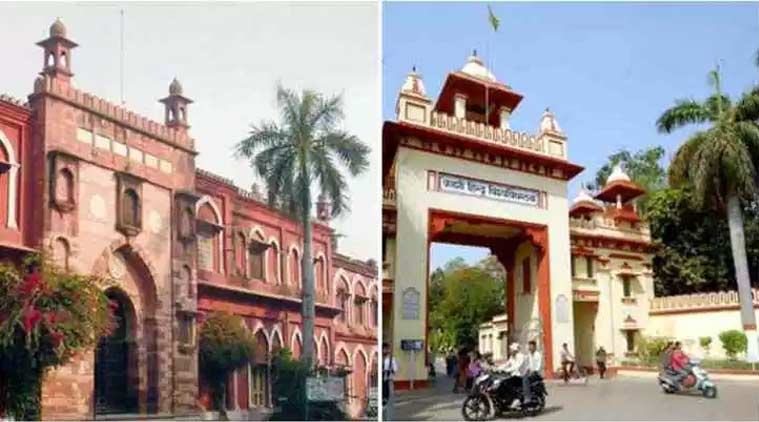A government audit of central universities has suggested that the words ‘Muslim’ and ‘Hindu’ should be dropped from the names of Aligarh Muslim University (AMU) and Banaras Hindu University (BHU) in order that their secular character be demonstrated, The Indian Express reported in its Monday edition. How did the ‘Muslim’ and ‘Hindu’ get into AMU and BHU to begin with, and why are the names under scrutiny after around a century of their existence?

The names are rooted in the respective histories of the two universities, and in the reasons for their establishment. AMU’s origins lay in the Muhammadan Anglo-Oriental (MOA) College, set up by Sir Syed Ahmad Khan in 1875 to help Muslims in India overcome their educational backwardness and prepare themselves for government services. MOA provided western education, but also taught Islamic theology. In 1920, it was granted university status. The long title to the AMU Act read: “An Act to incorporate a teaching and residential Muslim University at Aligarh.”
BHU was set up by Pandit Madan Mohan Malviya, a prominent leader of the Indian National Movement in its early phase. According to the university’s official web site, “It always pained him (Malviya) to observe that while students belonging to other sects knew much about their religion, the Hindu students knew very little about their rich cultural legacy.” BHU’s main purpose was to enable its students to be true Hindus and true patriots.
Story continues below this ad
Religious education was initially compulsory at both universities, but it was made optional after independence.
Why have questions been raised on the names at this stage?
According to a government audit of AMU, ordered by the University Grants Commission (UGC), AMU and BHU should either be called just “Aligarh University” and “Banaras University”, or they should be named after their founders. This is rooted in the logic that all educational institutions funded by the union government are secular in nature, and their names should depict this fundamental characteristic.
But is this an entirely new idea?
No, it isn’t. The union government attempted, more than a half century ago, to change the name of BHU. In 1965, then Education Minister M C Chagla introduced the Banaras Hindu University Amendment Bill, 1965 in Parliament, seeking to drop the word ‘Hindu’ from the institution’s name, and to call it ‘Madan Mohan Malaviya Kashi Vishwavidyalaya’. During the debate on the Bill, Chagla told Rajya Sabha that the move was desirable in view of the policy of secularism that India had adopted.
Story continues below this ad
“Although we have removed the ‘Hindu’, we have got the name Madan Mohan Malaviya and the word ‘Kashi’ both of which represent the highest, the best, the noblest in Hindu culture, Hindu philosophy and Hindu history. Therefore… no disrespect whatsoever was meant to Hinduism or to the Hindu religion,” Chagla said.
Rajya Sabha passed the Bill on November 15, 1965. But the government had to drop the idea as the BHU campus was rocked by student protests. The RSS was one of the biggest opponents of the move. Students boycotted classes, took out processions, held meetings and burnt Chagla in effigy.
There was widespread concern in AMU too, as students anticipated that the union government would now move to change the name of their university as well.
What is likely to happen about the suggestion of the UGC panel now?
Story continues below this ad
The audit committee’s mandate was limited to auditing AMU’s infrastructure, and its academic, research and financial operations. To that extent, the observation regarding the names of AMU and BHU seems to have been a case of overreach by the panel. Faced with a potential backlash from the universities, HRD Minister Prakash Javadekar clarified on Monday that the government had no intention of acting on the suggestion. Minority Affairs Minister Mukhtar Abbas Naqvi too said the same.

 Aligarh Muslim University and Banaras Hindu University
Aligarh Muslim University and Banaras Hindu University





































